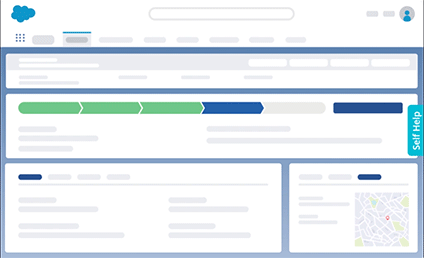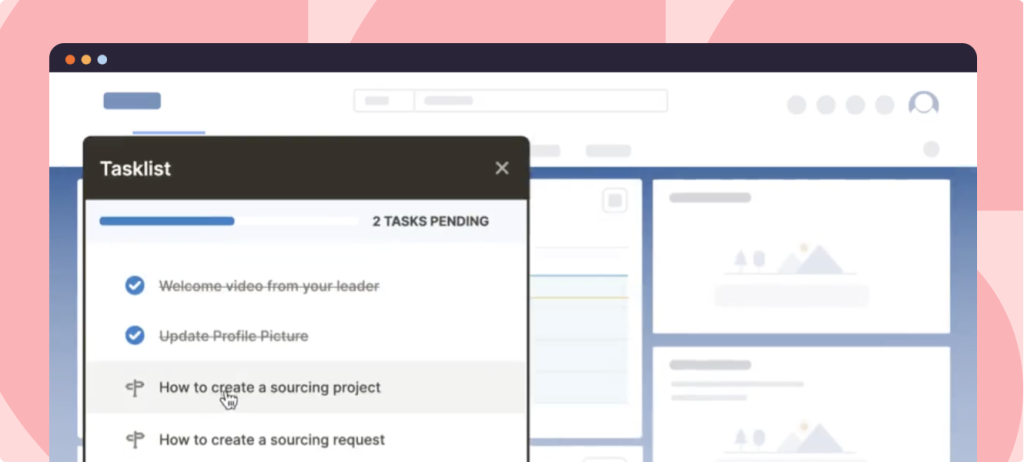In an effort to improve employee experience, employee performance, and plan better for future workforce needs, companies and their HR teams are implementing advanced, data-driven HCM-related strategies.
Workforce analytics are enabling these people management teams with the insights to power these strategies and make data-driven decisions.
What Are Workforce Analytics?
Workforce analytics is the process of collecting workforce-related data – both from internal and external sources – analyzing that data and turning it into actionable information. By collecting employee data, workforce analytics enables you to make better strategic business decisions concerning personnel, provide ROI evidence for workforce-related decisions, and improve overall business outcomes.
Workforce Analytics vs. People Analytics vs. HR Analytics
While the terms workforce analytics, people analytics, and HR analytics are sometimes used interchangeably, there is a slight difference between them.
- HR analytics are any type of data or analysis performed by the HR department to improve decisions that impact HR functions and overall business outcomes. It helps organizations understand how investments in human capital assets contribute to generating revenue, minimizing expenses, mitigating risks, and executing strategic plans. For instance, analyzing processes like how long it takes to fill a vacant position.
- People analytics also involves collecting, evaluating, and acting on HR data to improve people-based business outcomes. However, the goal isn’t limited to performance improvement strategies. It is rather used to identify consistent patterns in employee behavior. For instance, predicting turnover, identifying burnout, and examining how larger events (such as COVID-19) affect employees with additional stress and changing work environments.
- Workforce analytics consider the work itself in a broad sense rather than only focusing on the people. It monitors and examines employees’ work productivity to improve workflow and enable HR leaders to make data-driven decisions that boost employee success and employee experience.
Related Resources
Benefits of Workforce Analytics
The benefits of workforce analytics for your organization center around tracking employee performance to set a benchmark for hitting goals and driving efficiency. Here are a few of the biggest benefits of capturing and analyzing workforce analytics:
1. Create better criteria for hiring
Workplace analytics help identify the demand for new functions and positions early on. It’salso helpful in identifying qualified candidates faster and providing greater value during the hiring and onboarding process.
2. Eliminate data silos
Workforce analytics helps break down data silos and centralize all your workforce data in one place. This enables greater visibility, self-service, and a comprehensive data set while improving communication among decision-makers.
3. Transparency
Using workforce analytics can help build a strong culture of trust and transparency where individual employee contributions are acknowledged and rewarded. Workforce analytics leave a trail of data to showcase to employees who is being recognized and why.
4. Improved monitoring
Workforce analytics enable business leaders to monitor the inputs and outputs of their pre-post-employee hiring processes and track progress against set benchmarks.
5. Boosted employee morale
If used in the right way, workforce analytics helps boost employee morale by showing your employees you care. You can use the employee data to ensure that there are adequate staffing levels so no employee feels overworked or burnout. The data can also be used to proactively give employees pay raises so they are in line with (or above) the industry average to keep them motivated and give their 100% at work.
Practical Examples of Workforce Analytics
Let’s discuss a few practical examples of how workforce analytics can be used for your organization.
1. Employee engagement
Companies today are more focused on employee engagement, as engaged employees are more likely to be committed to the company, feel motivated and attached to their work, and have better output. Engaged employees are more excited to come to work every day, be productive, and believe in the company’s vision.
Workplace analytics not only measures current employee engagement but also showcases data to prove whether or not certain engagement practices have reached their intended outcomes. Additionally, analytical tools give organizations insights into essential workplace attributes such as productivity, collaboration, and flexibility.
2. Employee retention
Different factors affect employee retention, such as burnout, lack of career opportunities, lack of employee development plans, and work culture.
Workforce analytics data equips HR leaders with insights into an organization’s weaknesses that are causing employees to leave the company. This allows organizations to confront the issues head-on and redirect more attention and resources to critical problems.
In addition to this, workforce analytics helps employee retention by:
- Monitoring and addressing compensation rates for employees based on performance.
- Monitoring behaviors that characterize employees who may want to leave the organization.
- Creating personas for the type of employees most likely to leave the company and building retention programs accordingly.
3. Recruitment
The key to keeping employees engaged is to hire strong candidates and retain them as long as possible. Yet, many companies struggle with their hiring and retention procedures. To get to the bottom of these issues, HR teams can utilize workforce analytics to
- Automatically search resumes and unpack applicant information.
- Reduce recruitment costs with the efficiency of automated tasks.
- Anticipate what new roles are needed to recruit for.
- Understand the skills to look for in new hires based on the current talent.
- Speed up the time to hire.
4. Training efficiency
Another helpful example of workforce analytics is the ability to run reports on essential metrics that reveal the efficiency and effectiveness of onboarding, training, and upskilling programs.
Workforce analytics solutions allow people teams to:
- Find and measure the link between training and performance.
- Collect data from various sources and store it in a centralized repository.
- Generate actionable insights to measure training effectiveness.
- Identify trends from large sets of employee training data to understand the impact of your learning activities on employee retention and engagement.


→ Guide users through complex apps with contextual, role-based in-app guidance.
→ Support users at the moment of need with AI-powered Self Help and embedded workflow assistance.
→ Analyze user engagement to identify friction points and optimize business processes.
5. Succession planning
Workforce analytics helps with succession planning, that is, identifying people who can step up and fill the roles left vacant by departing employees. A succession plan can minimize disruptions and downtime and save time scouting for external talent.
Workforce analytics enable HR and managers to investigate and uncover vulnerabilities and skill gaps in the workforce and provide the best support for them to become better performers and reach their career goals, such as reskilling or upskilling programs.
How to Implement Workforce Analytics in Your Organization
To make workforce analytics work for your organization, here are the basic steps needed to get started.
1. Determine why you need workforce analytics
The first and most important step towards implementing workforce analytics in your organization is to ask questions about the desired business outcomes ie. what do you want to achieve – boost employee engagement?, reduce employee turnover?, measure training effectiveness?, and so on.
A specific problem or question will help determine what data and statistical models are needed and also establish the KPIs.
2. Define metrics to track
The “determine why” step will help you get a clear objective. From there, you can define the variables you need to track to inform your final decision.
For example, if you are aiming to boost employee engagement, establish metrics that quantify employee motivation to measure the effectiveness of the company’s incentive program. Or, if you need to figure out the skill gaps in the workforce, the metrics might include the training results for different departments, the benchmarks for each department, and a correlation with employee survey results.
Depending on your specific case, there might be dozens of different metrics to track.
3. Communicate the purpose of your workforce analytics
Communicate your workforce analytics program plan to the workforce starting with the business leaders, letting them know your goals and how you plan to achieve them. Next, bring managers into the fold, as they are likely to be the power users of your plan.
After the leaders have been brought on board, invite the team members into the conversation. Be clear about the goals of your program and give employees an opportunity to ask questions. Continue communication even after the plan’s rollout, as communication creates a positive feedback loop and develops a culture of trust.
4. Gather high-quality people data
Collect top-quality, ethical workforce data and determine the type of information to collect. This could include workforce demographic data, skills data, performance data, training completion data, employee survey results.
Some data collection methods include:
- Automated software
- Employee surveys
- Cloud analytics
- Performance trackers
- Manual data collection
- Labor market data
5. Decide on the right analysis method
The next step is to decide which analysis method is most suitable for analyzing your data. A few examples of how our analyze your workforce analytics include:
- Trend analysis – comparing data over a set period in the past to identify any trends.
- Correlation analysis – used to study the strength of a relationship between two variables.
- Predictive analysis – helps anticipate future outcomes and values based on the analysis of current and historical data.
- Prescriptive analysis – used after predictive analysis to plan the most suitable course of action for the organization to meet its goals.
- Diagnostic analysis – identifies the causes of success or failure within a workforce, which can be used to correct failures and boost performance.
6. Data hygiene
Conduct basic data hygiene practices, such as assessing the quality of data and cleaning it. You should also address any legal concerns and align ethical standards for data privacy and security compliance with project goals.
7. Present results
Once you’ve selected the most appropriate analysis method, the next step is to conduct the analysis and present the findings to relevant business leaders and stakeholders.
The data can be documented and transformed into easy-to-read formats. Visuals such as charts and graphs can help build a better understanding of workforce analytics results, or you can display the results in a report – what’s important here is that it’s clear and easy to understand.
8. Act on the data
With the data in hand, you can start developing and implementing a strategy for addressing the outlined problem.
At this point, your HR department will work together with the management team to discuss the findings and come up with appropriate solutions. To determine the right solution, you’ll need to check every hypothesis. The process isn’t fast, but eventually, you’ll find a data-driven decision to a problem that has been affecting your business for a long time.
5 Best Workforce Analytics Tools in 2025
Here are the top workforce analytics tools for you to implement in 2025.
1. SAP SuccessFactors
SAP SuccessFactors is a suite of HR/HCM products covering core HR areas such as payroll, recruiting, onboarding, learning and development, performance and compensation management, workforce analytics and planning, and employee experience management.
With SuccessFactors, you can get data-driven insights into your workforce, investigate trends with people analytics, and use powerful analysis to improve strategic workforce planning.

2. Visier
Visier helps organizations gain insight between employee experience and organizational effectiveness and use technology to drive customer experience, innovation, engagement, and better business outcomes.
Some of the major workforce analytics features that Visier provides include – automated data collection, self-service insights, data analysis, and predictive analytics.

3. Workday
Workday is a leading enterprise HCM software provider of enterprise cloud applications for HR, finance, and planning that delivers financial management, human capital management, and analytics applications.
With a wide range of prebuilt and configurable capabilities, Workday surfaces the data-driven insights you need to take care of your people. You can identify opportunities to improve your talent acquisition process, understand challenges in your hiring process, and see what keeps current employees motivated, happy, and productive.

4. ChartHop
Workday is a leading enterprise HCM software provider of enterprise cloud applications for HR, finance, and planning that delivers financial management, human capital management, and analytics applications.
With a wide range of prebuilt and configurable capabilities, Workday surfaces the data-driven insights you need to take care of your people. You can identify opportunities to improve your talent acquisition process, understand challenges in your hiring process, and see what keeps current employees motivated, happy, and productive.

5. WorkForce Suite
The WorkForce Suite is a mobile-first, cloud-based modern workforce management solution with integrated employee communications and collaboration capabilities. The tool helps organizations optimize their workforce, protect against compliance risks, and maximize productivity while building a highly engaged, resilient, and agile workforce.
The WorkForce Suite provides several features, including time and attendance, scheduling of diverse employee populations, labor forecasting, absence and leave management, task management, workforce analytics, fatigue management, digital workplace assistant, employee self-service, shift management, employee communications and collaboration, employee voice and micro training.

Analytics Software Clicks Better With Whatfix
Implementing a digital adoption platform like Whatfix to adopt your ideal workforce analytics software within the organization allows your HR team to function at their fullest potential. Whatever software you choose for your business, Whatfix helps you onboard and guide your employees through your new solution.
Whatfix drives user adoption to get the maximum value from your software application without skyrocketing support costs. Whatfix provides a personalized onboarding & training experience on your workforce analytics software with customized pop-ups, smart tips, and interactive walkthroughs – ensuring faster learning and an accelerated onboarding experience.
Schedule a free demo with us to unlock the full potential of your workforce with better support training and support content!






